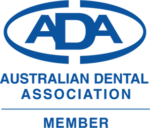When To Brush Baby’s Teeth: First grin, first word, first time crawling, first solid food, and, of course, the eruption of your child’s first tooth are all important milestones for parents to keep track of during the first year of their child’s life. Little teeth breaking through the gum line can melt your heart, but are you aware of the best practices for maintaining and improving the oral health of these teeth? If the answer is no, don’t worry; just continue reading.
When to Start Brushing Your Baby’s Teeth?


It may be tempting to put off caring for your child’s dental hygiene until he or she has a full set of teeth, but you should actually begin much sooner. You don’t even need to wait till the first tooth has erupted above the gumline to prepare your child for oral health!
In fact, you can begin caring for your baby’s gums immediately after birth.
Gum brushing, from 0 months onwards
The first tooth could erupt between 4 and 12 months of age. When your infant’s mouth is merely a gummy smile, you can wipe their gums and remove bacteria using a damp, soft cloth or a finger brush. This has the extra benefit of acclimating the child to having his or her mouth brushed, which helps minimize harm to the baby teeth as they emerge.
The eruption of the first teeth
As soon as teeth show above the gumline, it is recommended that you brush your child’s teeth at least twice each day for two minutes. One of these instances should occur after their last meal and before bed to prevent food or milk from remaining in their mouth overnight.
You should also arrange your child’s first visit with a pediatric dentist after the eruption of their first tooth or before their first birthday, whichever comes first.
This is also an excellent time to switch from a washcloth or finger brush to a child-sized soft-bristled brush, so that you can keep your fingers a bit further away from those sharp new incisors!
12-to-18 month
As your child continues to develop additional teeth, it is crucial that you maintain strong oral hygiene practices.
If you haven’t already incorporated twice-daily tooth brushing into your morning and evening regimen, now is the time to start. If you haven’t already, you should also schedule an appointment for them to see a pediatric dentist at this time.
Depending on the number of teeth kids have at this age, you may also want to consider purchasing children’s floss. Concentrate flossing efforts on the back molars, where food is most prone to become lodged.
You can see a dentist for recommendations on flossing your baby’s teeth, including the age at which he or she recommends you begin.
How Should A Baby’s Teeth Be Brushed?


- Before teeth emerge: Clean gums with a damp towel or finger brush and water.
- When baby has teeth but can’t spit: Gently brush teeth with a damp toothbrush, using a grain-of-rice sized amount of toothpaste for those under 3.
- Assist in spitting out toothpaste.
- Encourage proper oral hygiene habits.
How Does One Select A Toothbrush?


- Age and Teeth Count
The age of your child and the number of teeth they have will impact the selection of a toothbrush. - Infants with No Teeth or Growing Teeth
If your infant has no teeth or is just starting to grow teeth, a finger brush or towel can be a good option to prepare them for cleaning their mouth and remove bacteria from their gums for healthy tooth development. - Teether-style Brushes
When your child begins teething, they can take a more active role in dental care with brushes with nubs or teether-style brushes. These allow your child to practice using a toothbrush-like object and provide a little dental care. - Fun Shaped Brushes
Brushes also come in various fun shapes, such as cacti, sharks, or bananas, which can be presented as toys during playtime without toothpaste and under adult supervision to alleviate teething discomfort. - Soft-Bristled
Toothbrushes with Toothpaste Once your child has teeth, introduce a soft-bristled toothbrush and toothpaste. Children’s toothbrushes have a smaller head to fit better into their mouth, and come in a range of colors and patterns to suit their preferences. Some toothbrushes have larger handles for easier gripping by toddlers, but adult supervision is always needed for a thorough cleaning.
Babies Teeth And Fluoride Toothpaste
Fluoride is a mineral that is essential for maintaining strong and healthy teeth. It can be found in many types of toothpaste, including those specifically designed for babies.
The American Dental Association (ADA) recommends that parents begin brushing their baby’s teeth as soon as the first tooth comes in. Just using a small amount of fluoride toothpaste. This helps to protect the baby’s developing teeth and gums from decay.
Fluoride works by strengthening the enamel of the teeth and making it more resistant to acid attacks from plaque and bacteria. By using fluoride toothpaste, parents can ensure that their baby’s teeth receive the protection they need to maintain good oral health.
How to Use Fluoride Toothpaste for Babies Safely?


The American Dental Association (ADA) recommends using a rice-sized amount of fluoride toothpaste on a soft-bristled toothbrush to brush your baby’s teeth twice a day. It is important to supervise brushing to ensure that your child does not swallow the toothpaste, as too much fluoride can be harmful. If your child is under two years old, the ADA recommends using a toothpaste without fluoride until they are old enough to rinse and spit.
To ensure safe and effective use of fluoride toothpaste, parents should follow these guidelines:
- Use a small amount of toothpaste (about the size of a grain of rice) on the brush.
- Brush gently, focusing on the fronts, backs, and tops of the teeth, as well as the tongue and roof of the mouth.
- Avoid letting your child swallow the toothpaste. If they do, rinse their mouth with water.
- Supervise brushing to make sure it is done properly and that your child does not swallow too much toothpaste.
- Rinse the brush with water after brushing.
- If your child is under two years old, talk to your dentist or pediatrician about using fluoride-free toothpaste until they are old enough to rinse and spit.
By following these guidelines, parents can help protect their baby’s developing teeth and gums, and ensure that they receive the benefits of fluoride for good oral health.
Choosing Baby Fluoride Toothpaste
With many alternatives, choosing fluoride toothpaste for your baby can be difficult. When choosing, consider these aspects.
- Age: The ADA recommends fluoride toothpaste for children over two. Use fluoride-free toothpaste for toddlers.
- Fluoride: Fluoride toothpaste varies in strength. Choose a fluoride-containing toothpaste for your child’s age and needs.
- Taste, feel: Taste and texture may help babies accept toothpaste. Many kinds of toothpaste for kids have unique flavors and textures youngsters love.
- Branding: Choose a trusted brand for safety and efficacy.
- Cost: Consider your budget when buying fluoride toothpaste. Remember that price doesn’t always imply quality.
- Dentist/pediatrician advice: Your child’s dentist may suggest toothpaste.
Parents can choose a safe, effective, and appropriate fluoride toothpaste by considering these considerations.
Take the First Step in Your Child’s Oral Health with a Visit to Spring Orchid Dental!
At Spring Orchid Dental, we have observed numerous instances of tooth decay in children over the years. It is imperative to establish good oral hygiene practices at an early stage to mitigate the likelihood of future dental issues.
By consistently brushing your child’s teeth, abstaining from sugary beverages, and taking them to our clinic for regular check-ups, you can ensure that they maintain optimal oral health throughout their lifetime.
To give your child the benefit of a healthy smile, we strongly encourage you to book an appointment with us at Spring Orchid Dental without delay.
FAQs
When should I take my baby to the dentist for the first time?
It is recommended to take your baby to the dentist as soon as their first tooth appears, or no later than their first birthday
What if my baby refuses to have their teeth brushed?
It is common for babies to resist brushing their teeth, but it is important to persist with a gentle and positive approach. Making brushing a fun and enjoyable experience can help.
How can I promote good oral hygiene for my baby?
You can promote good oral hygiene for your baby by brushing their teeth regularly, avoiding sugary drinks, and taking them to the dentist for regular check-ups.





